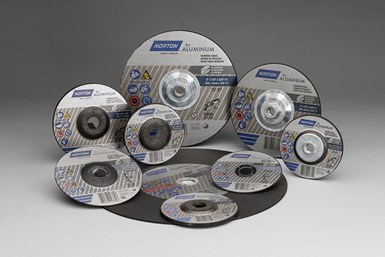Saint-Gobain Abrasives Expands Line of Cutting Wheels
Norton for Aluminum Thin Wheels are said to offer aggressive, fast cutting which resists loading and minimizes heat on the workpiece.
Share










Takumi USA
Featured Content
View MoreSaint-Gobain Abrasives has introduced its new Norton for Aluminum Thin Wheels for right-angle cutting and grinding of aluminum and other non-ferrous soft metals. The wheels features extra-friable and self-sharpening aluminum-oxide grain and specialized bond technology. The new wheels are said to offer aggressive, fast cutting which resists loading and minimizes heat on the workpiece, providing consistent, long-lasting wheel performance.
Norton for Aluminum wheels include a 5/8"- 11" hub for quick, tool-free wheel changes. Helping to keep metal surfaces clean for defect-free, corrosion-free welding, the new wheels have a contaminate-free bond which does not need any waxes or lubricants. Additionally, a double coarse layer construction adds versatility and life on applications such as back-grinding and notching. According to the company, the Norton for Aluminum wheels’ construction is strong and safe, exceeding ANSI and international safety standards.
Key markets for Norton for Aluminum include aluminum and metal fabrication, welding, shipbuilding, automotive and transportation, aerospace and construction. Applications include aluminum, cut-off, portable grinding, beveling, notching, smoothing welds and offhand stock removal. The new wheels are available in 1/4" Grinding Type 27, 1/8" Cutting/Notching/Grinding Type 27, 0.045" Right-Angle Cut-Off Types 01/41 and 27/42 and Straight Cut-Off Type 01/41.
Related Content
-
How to Successfully Adopt Five-Axis Machining
While there are many changes to adopt when moving to five-axis, they all compliment the overall goal of better parts through less operations.
-
How to Mitigate Chatter to Boost Machining Rates
There are usually better solutions to chatter than just reducing the feed rate. Through vibration analysis, the chatter problem can be solved, enabling much higher metal removal rates, better quality and longer tool life.
-
Quick-Change Tool Heads Reduce Setup on Swiss-Type Turning Centers
This new quick-change tooling system enables shops to get more production from their Swiss turning centers through reduced tool setup time and matches the performance of a solid tool.





















.png;maxWidth=150)













